You are using an out of date browser. It may not display this or other websites correctly.
You should upgrade or use an alternative browser.
You should upgrade or use an alternative browser.
Rose Kennedy Greenway
- Thread starter callahan
- Start date
I walk the parks nearly everyday, and so far in the summer they seem to be a huge success especially the fountain. People I bring in that have not seen them or ever been to Boston think they are amazing.
A big deadspot, however, is right in front of Rowes wharf that has the big brick and stone plaza. I'd like to think that live will be brought to these areas if the museum gets built over the access ramps. But nothing is certain with buildings on the greenway.
A big deadspot, however, is right in front of Rowes wharf that has the big brick and stone plaza. I'd like to think that live will be brought to these areas if the museum gets built over the access ramps. But nothing is certain with buildings on the greenway.
Charlie_mta
Senior Member
- Joined
- Jul 15, 2006
- Messages
- 4,570
- Reaction score
- 6,502
I still think a light rail line along the Greenway from North to South Station would really boost usage and functionality of the Greenway as a public space. A two track system could be run in mixed traffic on the existing surface street couplet: northbound track on the left lane of the northbound roadway, and the southbound track on the left lane of the southbound roadway. Light rail cars with a left side door would allow boarding of passengers directly from the Greenway. The amount of parkland taken from the Greenway would be negligible.
In the Bullfinch Triangle area the split arrangement would continue with one track running up one street and the other on a parallel street. Easy access to North Station would be provided.
If Silverline Phase III is built, the south end of the RKG light rail could ramp down into the tunnel just north of Dewey Square and continue as underground light rail to connect to the Green line tunnel west of Boylston Station. That way the RKG light rail line could be a branch of the Green Line.
In the Bullfinch Triangle area the split arrangement would continue with one track running up one street and the other on a parallel street. Easy access to North Station would be provided.
If Silverline Phase III is built, the south end of the RKG light rail could ramp down into the tunnel just north of Dewey Square and continue as underground light rail to connect to the Green line tunnel west of Boylston Station. That way the RKG light rail line could be a branch of the Green Line.
Pierce
Active Member
- Joined
- May 29, 2008
- Messages
- 461
- Reaction score
- 1
I still think a light rail line along the Greenway from North to South Station would really boost usage and functionality of the Greenway as a public space. A two track system could be run in mixed traffic on the existing surface street couplet: northbound track on the left lane of the northbound roadway, and the southbound track on the left lane of the southbound roadway. Light rail cars with a left side door would allow boarding of passengers directly from the Greenway. The amount of parkland taken from the Greenway would be negligible.
In the Bullfinch Triangle area the split arrangement would continue with one track running up one street and the other on a parallel street. Easy access to North Station would be provided.
If Silverline Phase III is built, the south end of the RKG light rail could ramp down into the tunnel just north of Dewey Square and continue as underground light rail to connect to the Green line tunnel west of Boylston Station. That way the RKG light rail line could be a branch of the Green Line.
Aside from the left hand door, what advantage would this have over a bus? don't get me wrong, I don't buy into the "Bus Rapid Transit" song and dance, but in this case you're really gaining nothing on it, and having a huge cost in infrastructure. If the powers at be wouldn't go in for building a train connection between the two station when there was already a trench dug, I wouldn't imagine the would even blink at this proposal.
I do however think that this route (as well as Memorial Drive) is woefully un[der]serviced by the mbta
The main advantages to light rail or streetcar over bus are:
- more comfortable ride (more space inside the cars, smoother riding)
- larger capacity (can hold more people than a bus)
- quieter
- more visible, route is obvious
- less pollution (electric vs diesel)
- more comfortable ride (more space inside the cars, smoother riding)
- larger capacity (can hold more people than a bus)
- quieter
- more visible, route is obvious
- less pollution (electric vs diesel)
I think it would be awesome if they built something like that track and just ran it from north and south station with a stop at the fanueil hall and maybe rowes wharf. It could just be one track that goes back and forth all day. And it looks small enough as to not cause a huge traffic disruption.
Crit Happens
New member
- Joined
- Apr 21, 2008
- Messages
- 18
- Reaction score
- 0
If the powers at be wouldn't go in for building a train connection between the two station when there was already a trench dug, I wouldn't imagine the would even blink at this proposal./QUOTE]
The north-south rail connection was actually going to run below the big dig tunnels and require lots of changes at South Station and North Station. Not to say it wouldn't have been worth it, but it would not have been a minor add-on by any means.
Pierce
Active Member
- Joined
- May 29, 2008
- Messages
- 461
- Reaction score
- 1
The main advantages to light rail or streetcar over bus are:
- more comfortable ride (more space inside the cars, smoother riding)
- larger capacity (can hold more people than a bus)
- quieter
- more visible, route is obvious
- less pollution (electric vs diesel)
well yeah, of course, but as suggested this line would be without a dedicated right of way and subject to the traffic lights. And it would be so short, it just doesn't seem to justify the cost. Don't get me wrong, I would love to see it, but I think it would need to be fit into the infrastructure a bit more: i doubt a bus/light rail moving along at the B line's aboveground pace would be much quicker than just going red line to park, green line to north station.
belmont square
Active Member
- Joined
- Jun 19, 2006
- Messages
- 365
- Reaction score
- 0
The main advantages to light rail or streetcar over bus are:
- more comfortable ride (more space inside the cars, smoother riding)
- larger capacity (can hold more people than a bus)
- quieter
- more visible, route is obvious
- less pollution (electric vs diesel)
Second point is both debatable, and not applicable (hard to imagine demand for service in this corridor requiring more than 40 foot buses). Fourth point is valid, although I hardly think a bus route running alongside a mile long park that is widely criticized for disrupting the urban fabric will be difficult for people to figure out ("excuse me, but do I board the Greenway bus right here along the Greenway, or over at the corner of Broad and Franklin?")
As for the comparison between the foreign light rail example and the Silver Line, I agree the bus looks like a loser. But how would a sleek Curitiba bus pulling into a station look next to a photo of a rush hour B Line trolley taking the 90 degree turn at Boylston Station?
A streetcar would also be attractive to tourists, at least in part for the "novelty" factor. Most tourists won't go "oh let's ride that cool bus", however I suspect that quite a few would hop on a sleek modern streetcar.
Boston02124
Senior Member
- Joined
- Sep 6, 2007
- Messages
- 6,893
- Reaction score
- 6,639
I go with the old street cars,other cities used them and the tourist love them,maybe the money earned from fares will help with the upkeep of the parks? Besides back when I drove the old centrel artery with the out of town realitives that was my tourist ride of Boston for them ,you could see all parts of Boston going 5 miles an hour!
Here are some interesting tourist observations of the fountain, with some neat night photos --
http://www.tabblo.com/studio/stories/view/1525998/
(Scroll around a third of the way down.)
"But on the way, we saw the coolest water and light show (with fog effects). These are some of my favorite shots we took that night."
http://www.tabblo.com/studio/stories/view/1525998/
(Scroll around a third of the way down.)
"But on the way, we saw the coolest water and light show (with fog effects). These are some of my favorite shots we took that night."
DowntownDave
Active Member
- Joined
- May 30, 2006
- Messages
- 315
- Reaction score
- 71
Again from the perspective of not having seen any of this landscaping under construction....
I do like how the Intercontinental turned out in the end. It is curious how one might at first not even realize that any work has been undertaken on Russia Wharf:
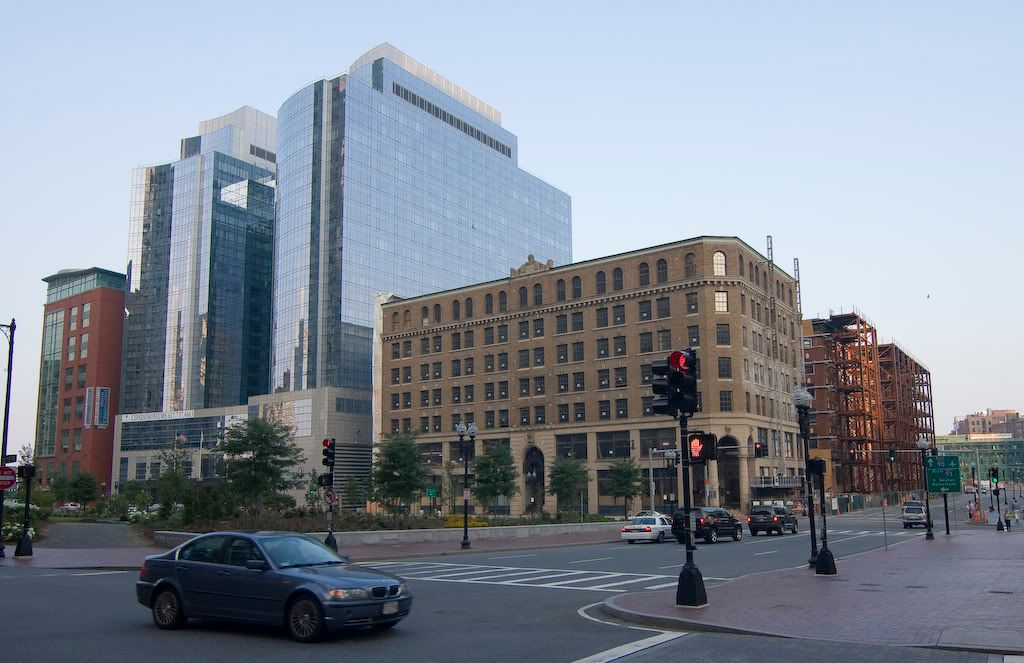
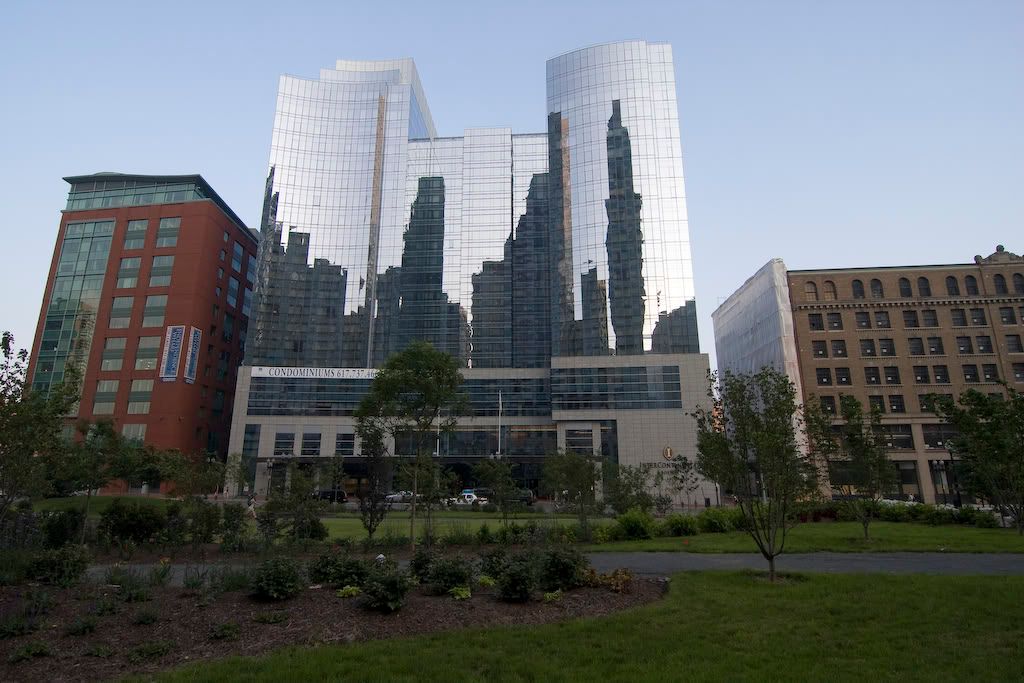
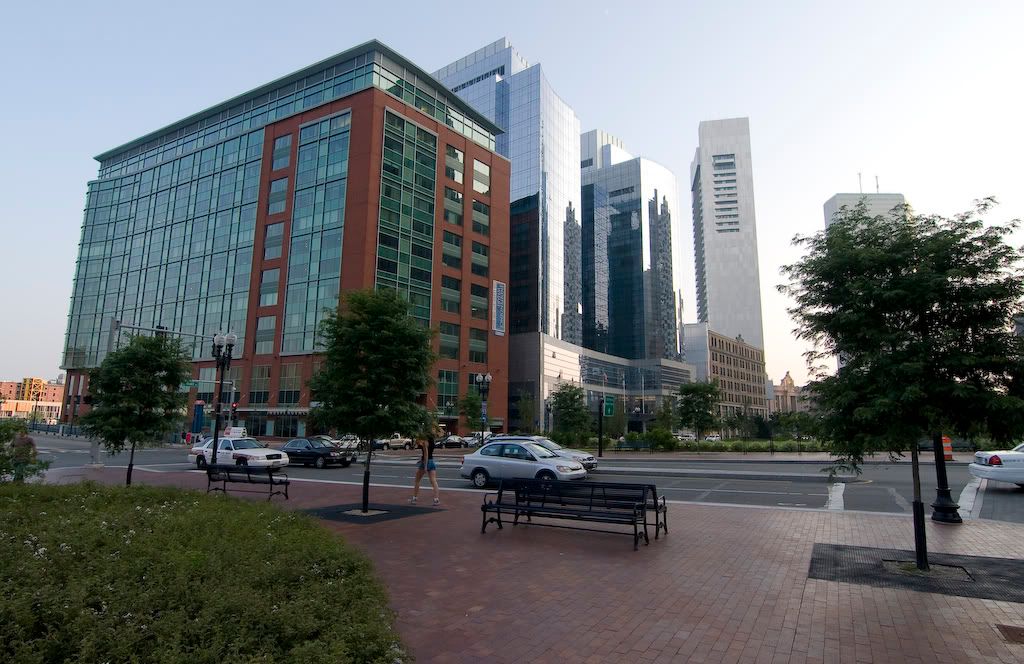
It is nice to see that someone has finally painted over the graffiti that once marred these buildings. The outdoor restaurant seating is a step up, too.
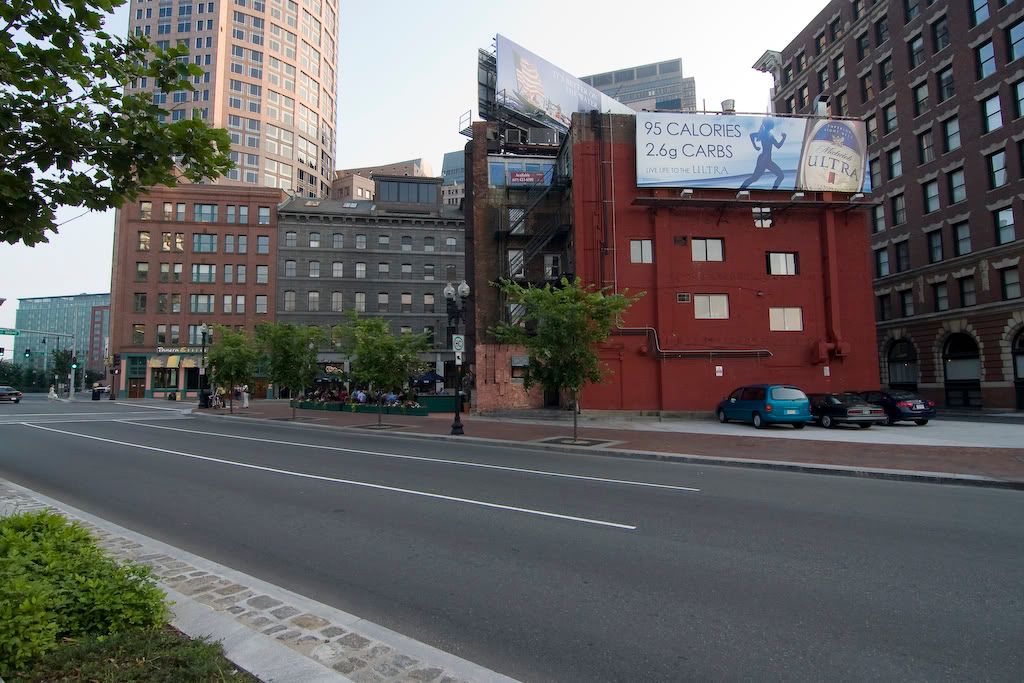
Evidently a giant atomic power plant has been installed underground here, and these are its heat radiators:

ISTR Beal was going to open a grand entrance onto the Greenway. I don't see any signs of it here:
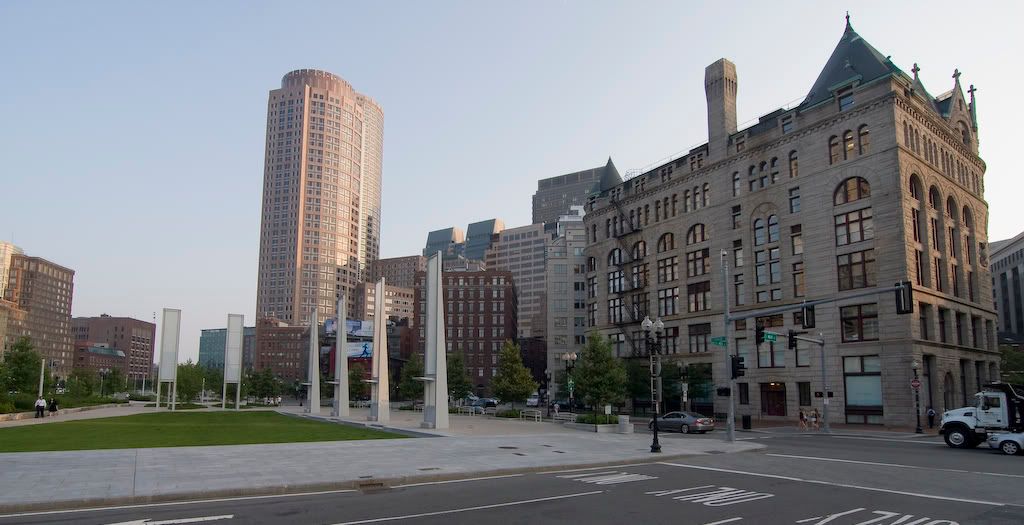
Still hard to imagine anyone was allowed to put up this mess:
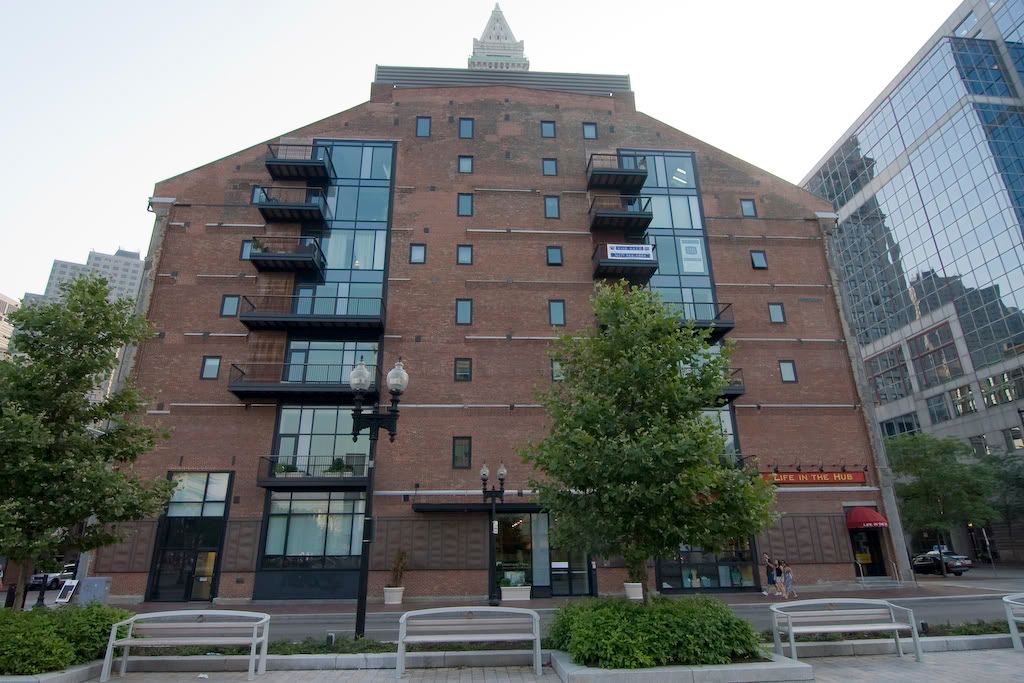
Pavements a plenty:
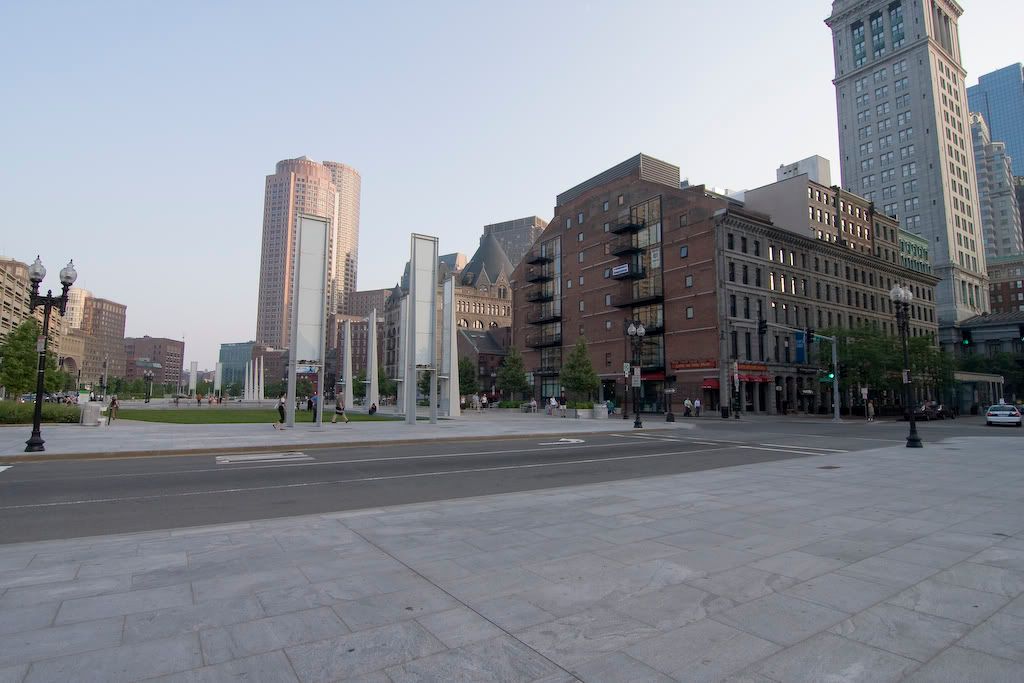
I expected to find more people in the North End parks, but there were at least a reasonable number around:

Hopefully soon to be retitled "Garagerdammerung":

Skyline views:
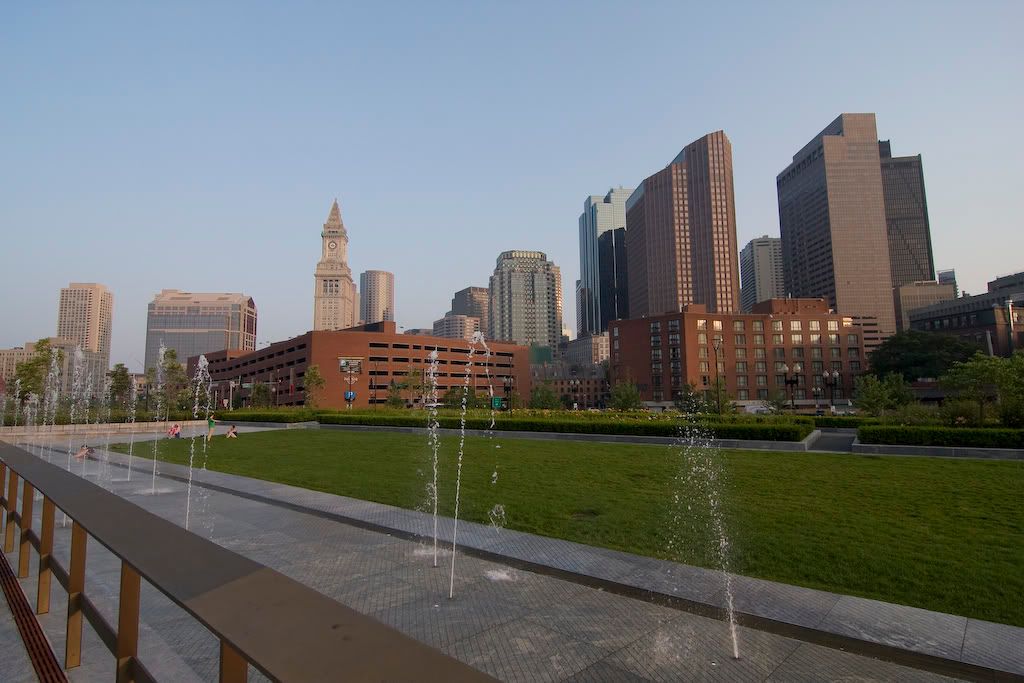
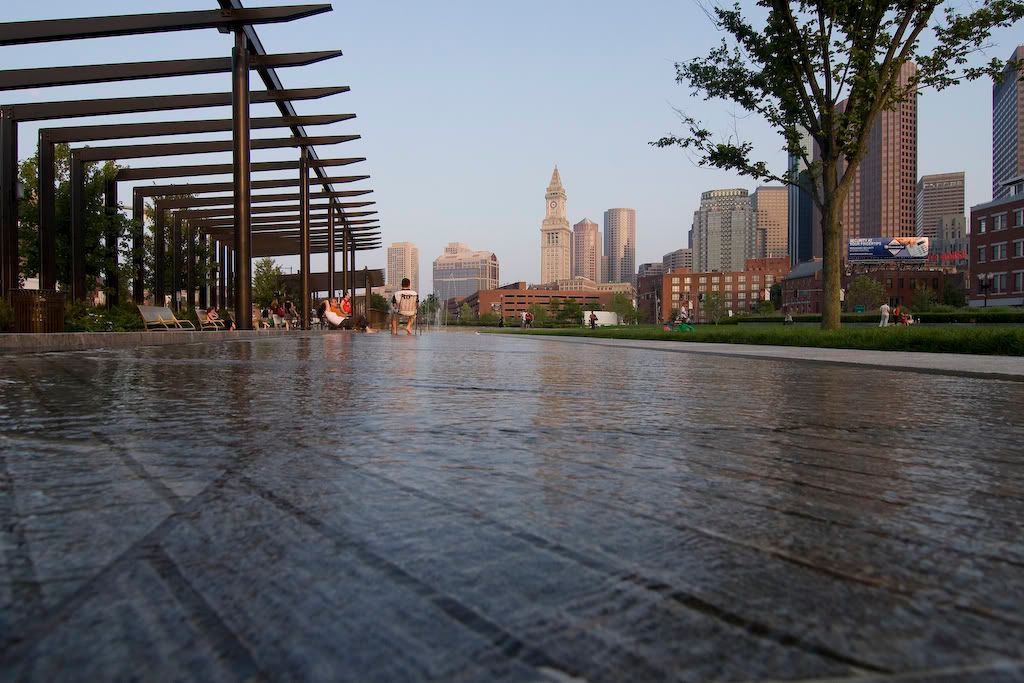
I suppose Folio isn't new and interesting to you guys anymore, but I suppose it at least adds people to Broad street and this part of town. They really could have done something better with the poor Bulfinch:
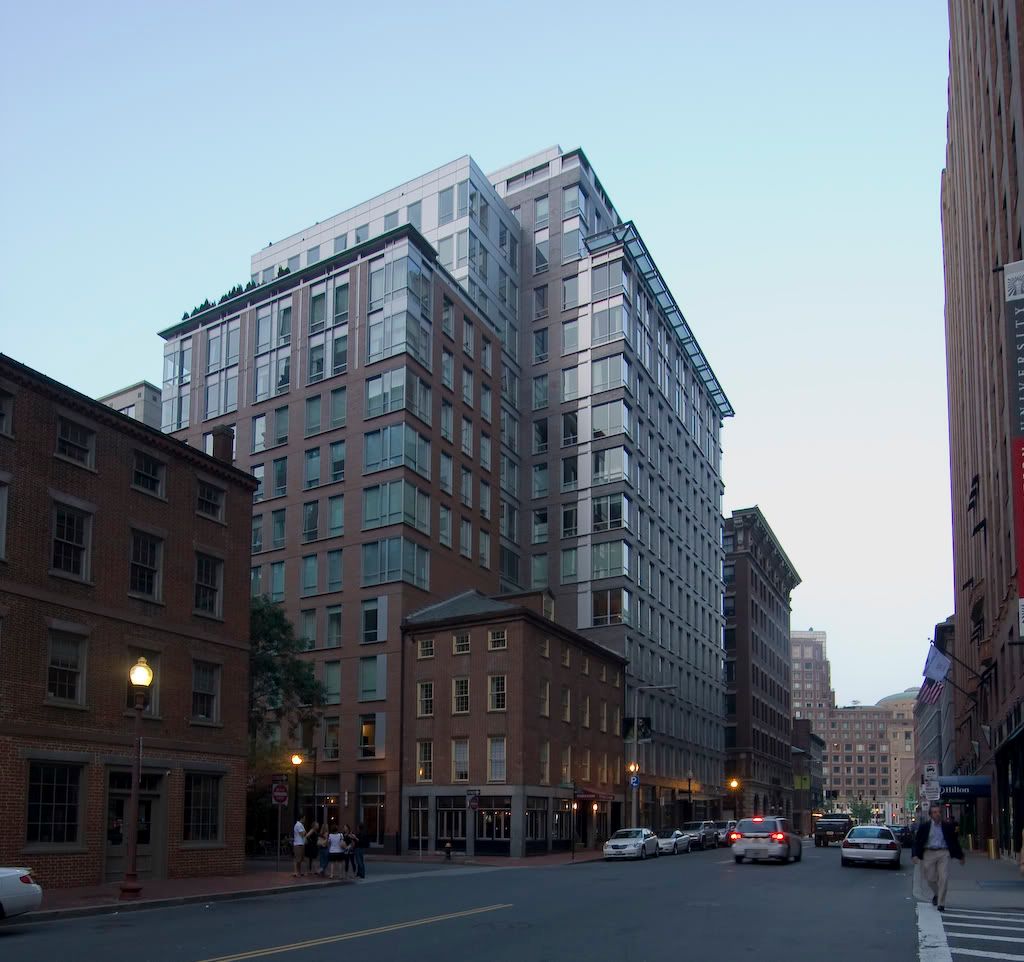
Is Broadluxe actually a completed project? They do not seem even to have cleaned up the exterior:
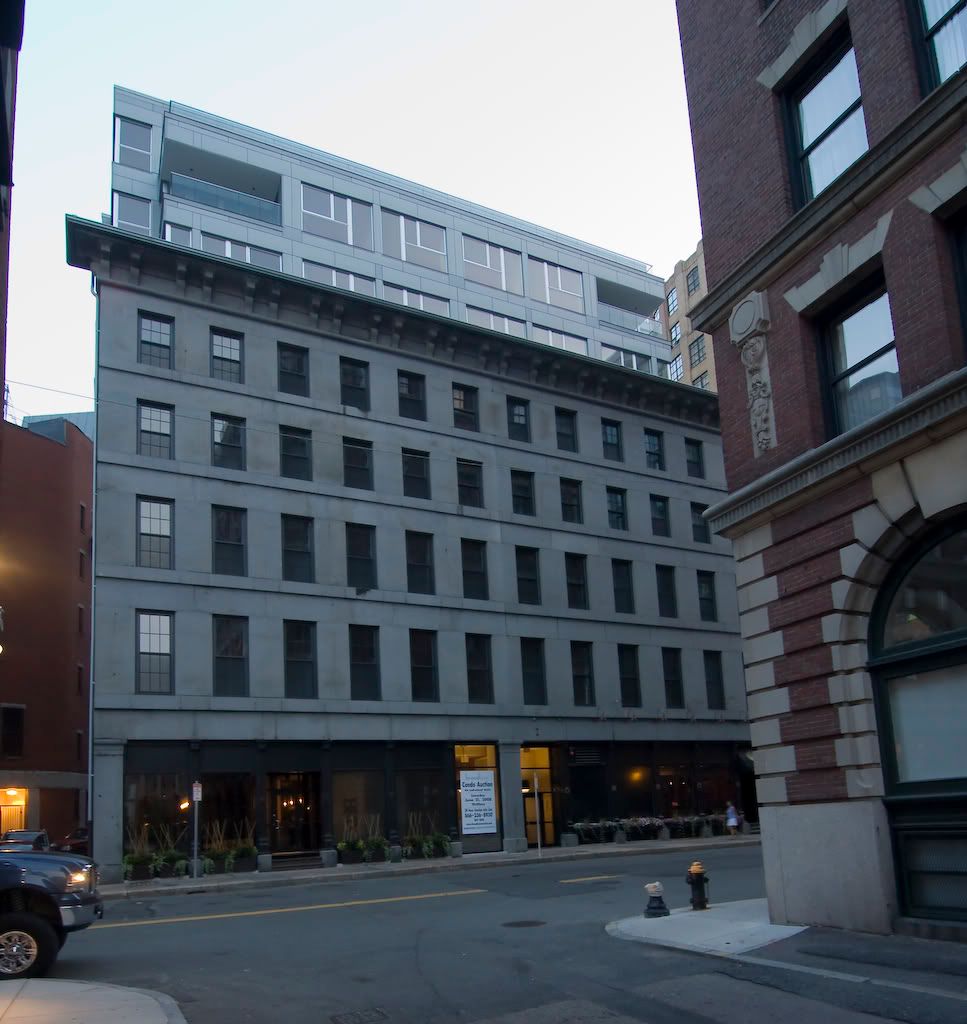
I do like how the Intercontinental turned out in the end. It is curious how one might at first not even realize that any work has been undertaken on Russia Wharf:



It is nice to see that someone has finally painted over the graffiti that once marred these buildings. The outdoor restaurant seating is a step up, too.

Evidently a giant atomic power plant has been installed underground here, and these are its heat radiators:

ISTR Beal was going to open a grand entrance onto the Greenway. I don't see any signs of it here:

Still hard to imagine anyone was allowed to put up this mess:

Pavements a plenty:

I expected to find more people in the North End parks, but there were at least a reasonable number around:

Hopefully soon to be retitled "Garagerdammerung":

Skyline views:


I suppose Folio isn't new and interesting to you guys anymore, but I suppose it at least adds people to Broad street and this part of town. They really could have done something better with the poor Bulfinch:

Is Broadluxe actually a completed project? They do not seem even to have cleaned up the exterior:

Beton Brut
Senior Member
- Joined
- May 25, 2006
- Messages
- 4,382
- Reaction score
- 338
Welcome back, Dave!
Great shots, as always!
Great shots, as always!
Lurker
Senior Member
- Joined
- Jun 13, 2006
- Messages
- 2,362
- Reaction score
- 0
The Beal brothers have completed drawings for a new appropriately grand accessible entrance onto the Greenway. That side of the 177 Milk Street was never intended to be public, it used to face an alley for the first 60 years of the building's existence, hence the relative lack of detailing compared to the other facades. The fire escape, windows, roof flashing, etc. are all in need of servicing in the future, so expect work to occur simultaneously within the next 5-10 years.
If you ever saw the original drawings and opening day photos of the interior and compared it to today, you'd probably cry. The building was a structural marvel in its day, had a huge meeting room within a triple height space and a massive light and ventilation well. Everything down to the carpet was meticulously designed and detailed. The interior of the building lost a lot of detail once the 1891-1924ish Chamber of Commerce and Flour and Grain Exchange1 924ish-1950 left, thanks to uncaring owners and especially the meddling Jung|Brannen in the 1960s.
The Beals saved the building from what probably would have been an unpleasant fate (wrecking ball for a rectangle with stripes) when they purchased it in 1980. The roof was repaired then and the stonework extensively cleaned and repointed. 1991 Perry Dean Rogers replaced the ugly 1964 Jung|Brannen lobbies with something a little more appropriate. The lobbies will probably be redone with the new Greenway entry as well.
/Member, National Trust for Historic Preservation = interesting conversations
If you ever saw the original drawings and opening day photos of the interior and compared it to today, you'd probably cry. The building was a structural marvel in its day, had a huge meeting room within a triple height space and a massive light and ventilation well. Everything down to the carpet was meticulously designed and detailed. The interior of the building lost a lot of detail once the 1891-1924ish Chamber of Commerce and Flour and Grain Exchange1 924ish-1950 left, thanks to uncaring owners and especially the meddling Jung|Brannen in the 1960s.
The Beals saved the building from what probably would have been an unpleasant fate (wrecking ball for a rectangle with stripes) when they purchased it in 1980. The roof was repaired then and the stonework extensively cleaned and repointed. 1991 Perry Dean Rogers replaced the ugly 1964 Jung|Brannen lobbies with something a little more appropriate. The lobbies will probably be redone with the new Greenway entry as well.
/Member, National Trust for Historic Preservation = interesting conversations
DowntownDave
Active Member
- Joined
- May 30, 2006
- Messages
- 315
- Reaction score
- 71
Thank you for the insight, Lurker. I visit the inside once a long time ago, and recall being surprised that it was quite a generic office building inside. Let's hope they put it right.
commuter guy
Active Member
- Joined
- Feb 1, 2007
- Messages
- 894
- Reaction score
- 130
Boston Globe article on the Greenway:
Not-so-green acres
Short on shade and visitors, the Rose Kennedy Greenway, atop the Big Dig tunnel, is off to a slow start in its inaugural summer
By Noah Bierman, Globe Staff | July 13, 2008
A group of women hurriedly crossed Milk Street on a recent afternoon, heading downtown from the waterfront, when one of them paused to look around.
"Do you know where the Rose Kennedy Greenway is?" asked Nevart Kouyoumjian of Waltham.
She was standing on it.
The series of parks in the heart of the city, the grand payoff after years of Big Dig construction, traffic jams, and national ridicule, has yet to establish an identity in Bostonians' mental map.
Planners plead for patience and note that the meandering park system atop the Big Dig will not officially open until October. But as it makes its unofficial warm-weather debut, the Greenway looks at times more like a fancy median strip - half its surface is paved - than the vital urban centerpiece, on par with the National Mall in Washington, D.C., or Las Ramblas in Barcelona, that was envisioned 15 years ago as the replacement for the elevated highway.
The meandering park system atop the Big Dig is narrow, with highway traffic on either side, and few activities so far to draw in the millions of tourists and office workers who pass by on their way from the wharfs to Faneuil Hall Marketplace and nearby skyscrapers.
There are pockets of activity along the 1.5-mile strip - children running around and through fountains, office workers playing badminton during lunch, tourists taking pictures and appreciating the views of the skyline. And those who have ventured along the paths, among the flowers, and especially near the public fountains, say they are impressed by the transformation from industrial highway to placid green space.
Yet the Greenway's custodians and planners acknowledge that it remains an open canvas - catching on in spots, empty in others - that has yet to establish itself as a signature destination. They point out that great civic parks often take years to reach their potential and that this one holds the promise of a greater impact than most, with 27 acres in the heart of downtown, tying the waterfront to the rest of the city.
"Sometimes you're lucky and you get a great park right out of the gate, like Millennium Park in Chicago," said Richard Dimino, who, as president of A Better City, advocated for the project on behalf of the business community and helped in the planning.
This one may need more nurturing, temporary cafes, or something else to stimulate it while the community deliberates longer-term possibilities, he said. Early plans that called for a grandiose glass winter garden have been abandoned; poor fund-raising has hindered a proposal for a Boston history museum; and other groups, including the YMCA, have also been forced to delay or scale down their Greenway projects.
Those voids have left the Greenway with a lack of continuity or an established sense of place.
"It's very nice, but nobody seems to know about it," said Michael Hall, a 45-year-old tourist from Toronto. His friend William Tang suggested that the city could start by putting it on the map.
Free tourist maps and public maps displayed around downtown Boston are inconsistent. Some mark the space; many don't. Small signs erected by the Massachusetts Turnpike Authority in parts of the Greenway are confusing, because they identify the parks by district but do not actually have the word "greenway" on them.
But many of those who know exactly where it is - those who work in Financial District offices that loom over the Greenway - are largely shunning it in favor of the intimate Post Office Square Park, where they pack the lawn and benches, taking advantage of live music and free cushions.
Unlike Post Office Square, the Greenway lacks shade. Thousands of shrubs, saplings, and flowers have been planted, but most of the trees are years from reaching mature height. And anyone who wants to use a bathroom or get a cold drink has to cross three lanes of traffic and find an accommodating restaurant or hotel. (There is one public restroom in front of the New England Aquarium, but it is not easy to spot.)
The blocks with fountains - particularly in the North End and the Wharf District - are proving the largest draw so far. Dozens of children, parents, and tourists, along with a few homeless people, congregate in and around the large fountain between Milk and State streets. It shoots water. It mists. It cools, to a degree.
"We come here a lot," said Mili Tomanic, who lives in a nearby waterfront building and brings her two daughters. "I would come here more in the morning if there was more shade."
Tomanic, an architect, said the space could be intimate if there were berms to insulate it better from traffic and a trellis to guard against the sun.
On sunny days, it's pleasant for a while, but begins to feel hot quickly. That's partly because the Greenway isn't all that green. Fifty percent of it is hard surface. That is meant in part to accommodate neighborhood groups - especially in Chinatown and the North End - who wanted to have space available for festivals, said Nancy Brennan, executive director of the Rose Kennedy Greenway Conservancy, which will run the park once it opens under a bill making its way through the state Legislature.
In many ways, the success of the Greenway is about more than putting the finishing touches on the interconnected parks. It will require a change in how Boston residents and office workers conceive of the city - a new mental drawing of the downtown, Brennan said. A stroll to the North End or Chinatown that once seemed an ordeal is now much easier and quicker with the old elevated highway removed. But it will take time for people who have established habits over many years to break them, she said.
"This is a 15-year-long city reinvention, and the Greenway is the most visible part of this engineering achievement. It will take us some time to fully realize and actualize and to understand its impact, but we've got time," Brennan said.
Bernard Cohen, the state transportation secretary, remembers the "creepy feeling" trying to cross under the old elevated highway to get from Haymarket to the North End in the 1980s. City dwellers crave open spaces, places to find sanctuary, and will fill the urban void as the Greenway matures, he predicted, while walking along the newest portions of the parks near South Station as highway noise emanated from both sides.
"The Greenway will find its place," he said.
Brennan is hoping the first introduction comes in October, with the official opening. The Greenway Conservancy is expecting 50,000 to 70,000 people to take tours, eat, listen to music, and watch performances as they get to know the park. Specially decorated MBTA buses will carry people up and down the corridor.
After that, the conservancy will begin planning more activities - music, cultural festivals, history-themed walks - to give people a reason to come to the parks. Though Brennan expects regular events on the property, some details remain open questions, in part because planners want to see how the plants and grasses respond to crowds and how well the area works as a performance space.
To answer some of the questions, the conservancy plans a survey to gauge how people are using the parks so far. This could help answer key questions posed by Greenway visitors and planners: Should there be vendors on the green? Restaurants? Plastic chairs? Temporary shading?
Meanwhile, the conservancy is seeking out smaller improvements: raising money for cushions such as those in Post Office Square, looking for ways to provide people with sunscreen and water, trying to make sure the space is marked with better maps.
Critics say the lack of money from the state - which was stretched after spending $15 billion on the Big Dig - and missteps have hindered chances to capitalize on early anticipation.
"Generally, it's pretty ordinary and not what the city was promised 20 years ago," said Michael Van Valkenburgh, a landscape architect who teaches at Harvard's graduate school of design. Van Valkenburgh said the architects who planned it were hamstrung by a lack of money and wound up with a "meager park" that lacks shade and drawing power. "It ends up being a little bit less like a park and more like a median strip with a path on it," he said.
On a recent Sunday, the two blocks near the North End were beginning to resemble something more than that. They were hardly crowded, but not empty either. Sixty people, a bulldog, and a German shepherd were lying on the grass, sitting on the metal tables under the pergola, or dipping in the shallow fountains. (The vines on the pergola have not grown in as planned, and Brennan said they may need replacing.)
It has become a fairly common scene on this portion of the Greenway, whether it's toddlers in the morning or older restaurant customers at night.
"We live right down the street, but actually, this is the first time we've come out here to enjoy it," said Rob Gillis, 30, who was sunning himself with Freya Hendrickson, 27.
There was highway noise in the background, but it was less intrusive than in other parts of the Greenway, perhaps because the shrubs and the streaming water offered a hint of seclusion.
"It just reminds you that you're in a city," Gillis said, "but sort of a nice calm spot in it."
Noah Bierman can be reached at nbierman@globe.com.
Link: http://www.boston.com/lifestyle/green/articles/2008/07/13/not_so_green_acres/?page=full
Here is the link for the detailed graphic with the article: http://www.boston.com/news/local/articles/2008/07/13/new_parks/
Not-so-green acres
Short on shade and visitors, the Rose Kennedy Greenway, atop the Big Dig tunnel, is off to a slow start in its inaugural summer
By Noah Bierman, Globe Staff | July 13, 2008
A group of women hurriedly crossed Milk Street on a recent afternoon, heading downtown from the waterfront, when one of them paused to look around.
"Do you know where the Rose Kennedy Greenway is?" asked Nevart Kouyoumjian of Waltham.
She was standing on it.
The series of parks in the heart of the city, the grand payoff after years of Big Dig construction, traffic jams, and national ridicule, has yet to establish an identity in Bostonians' mental map.
Planners plead for patience and note that the meandering park system atop the Big Dig will not officially open until October. But as it makes its unofficial warm-weather debut, the Greenway looks at times more like a fancy median strip - half its surface is paved - than the vital urban centerpiece, on par with the National Mall in Washington, D.C., or Las Ramblas in Barcelona, that was envisioned 15 years ago as the replacement for the elevated highway.
The meandering park system atop the Big Dig is narrow, with highway traffic on either side, and few activities so far to draw in the millions of tourists and office workers who pass by on their way from the wharfs to Faneuil Hall Marketplace and nearby skyscrapers.
There are pockets of activity along the 1.5-mile strip - children running around and through fountains, office workers playing badminton during lunch, tourists taking pictures and appreciating the views of the skyline. And those who have ventured along the paths, among the flowers, and especially near the public fountains, say they are impressed by the transformation from industrial highway to placid green space.
Yet the Greenway's custodians and planners acknowledge that it remains an open canvas - catching on in spots, empty in others - that has yet to establish itself as a signature destination. They point out that great civic parks often take years to reach their potential and that this one holds the promise of a greater impact than most, with 27 acres in the heart of downtown, tying the waterfront to the rest of the city.
"Sometimes you're lucky and you get a great park right out of the gate, like Millennium Park in Chicago," said Richard Dimino, who, as president of A Better City, advocated for the project on behalf of the business community and helped in the planning.
This one may need more nurturing, temporary cafes, or something else to stimulate it while the community deliberates longer-term possibilities, he said. Early plans that called for a grandiose glass winter garden have been abandoned; poor fund-raising has hindered a proposal for a Boston history museum; and other groups, including the YMCA, have also been forced to delay or scale down their Greenway projects.
Those voids have left the Greenway with a lack of continuity or an established sense of place.
"It's very nice, but nobody seems to know about it," said Michael Hall, a 45-year-old tourist from Toronto. His friend William Tang suggested that the city could start by putting it on the map.
Free tourist maps and public maps displayed around downtown Boston are inconsistent. Some mark the space; many don't. Small signs erected by the Massachusetts Turnpike Authority in parts of the Greenway are confusing, because they identify the parks by district but do not actually have the word "greenway" on them.
But many of those who know exactly where it is - those who work in Financial District offices that loom over the Greenway - are largely shunning it in favor of the intimate Post Office Square Park, where they pack the lawn and benches, taking advantage of live music and free cushions.
Unlike Post Office Square, the Greenway lacks shade. Thousands of shrubs, saplings, and flowers have been planted, but most of the trees are years from reaching mature height. And anyone who wants to use a bathroom or get a cold drink has to cross three lanes of traffic and find an accommodating restaurant or hotel. (There is one public restroom in front of the New England Aquarium, but it is not easy to spot.)
The blocks with fountains - particularly in the North End and the Wharf District - are proving the largest draw so far. Dozens of children, parents, and tourists, along with a few homeless people, congregate in and around the large fountain between Milk and State streets. It shoots water. It mists. It cools, to a degree.
"We come here a lot," said Mili Tomanic, who lives in a nearby waterfront building and brings her two daughters. "I would come here more in the morning if there was more shade."
Tomanic, an architect, said the space could be intimate if there were berms to insulate it better from traffic and a trellis to guard against the sun.
On sunny days, it's pleasant for a while, but begins to feel hot quickly. That's partly because the Greenway isn't all that green. Fifty percent of it is hard surface. That is meant in part to accommodate neighborhood groups - especially in Chinatown and the North End - who wanted to have space available for festivals, said Nancy Brennan, executive director of the Rose Kennedy Greenway Conservancy, which will run the park once it opens under a bill making its way through the state Legislature.
In many ways, the success of the Greenway is about more than putting the finishing touches on the interconnected parks. It will require a change in how Boston residents and office workers conceive of the city - a new mental drawing of the downtown, Brennan said. A stroll to the North End or Chinatown that once seemed an ordeal is now much easier and quicker with the old elevated highway removed. But it will take time for people who have established habits over many years to break them, she said.
"This is a 15-year-long city reinvention, and the Greenway is the most visible part of this engineering achievement. It will take us some time to fully realize and actualize and to understand its impact, but we've got time," Brennan said.
Bernard Cohen, the state transportation secretary, remembers the "creepy feeling" trying to cross under the old elevated highway to get from Haymarket to the North End in the 1980s. City dwellers crave open spaces, places to find sanctuary, and will fill the urban void as the Greenway matures, he predicted, while walking along the newest portions of the parks near South Station as highway noise emanated from both sides.
"The Greenway will find its place," he said.
Brennan is hoping the first introduction comes in October, with the official opening. The Greenway Conservancy is expecting 50,000 to 70,000 people to take tours, eat, listen to music, and watch performances as they get to know the park. Specially decorated MBTA buses will carry people up and down the corridor.
After that, the conservancy will begin planning more activities - music, cultural festivals, history-themed walks - to give people a reason to come to the parks. Though Brennan expects regular events on the property, some details remain open questions, in part because planners want to see how the plants and grasses respond to crowds and how well the area works as a performance space.
To answer some of the questions, the conservancy plans a survey to gauge how people are using the parks so far. This could help answer key questions posed by Greenway visitors and planners: Should there be vendors on the green? Restaurants? Plastic chairs? Temporary shading?
Meanwhile, the conservancy is seeking out smaller improvements: raising money for cushions such as those in Post Office Square, looking for ways to provide people with sunscreen and water, trying to make sure the space is marked with better maps.
Critics say the lack of money from the state - which was stretched after spending $15 billion on the Big Dig - and missteps have hindered chances to capitalize on early anticipation.
"Generally, it's pretty ordinary and not what the city was promised 20 years ago," said Michael Van Valkenburgh, a landscape architect who teaches at Harvard's graduate school of design. Van Valkenburgh said the architects who planned it were hamstrung by a lack of money and wound up with a "meager park" that lacks shade and drawing power. "It ends up being a little bit less like a park and more like a median strip with a path on it," he said.
On a recent Sunday, the two blocks near the North End were beginning to resemble something more than that. They were hardly crowded, but not empty either. Sixty people, a bulldog, and a German shepherd were lying on the grass, sitting on the metal tables under the pergola, or dipping in the shallow fountains. (The vines on the pergola have not grown in as planned, and Brennan said they may need replacing.)
It has become a fairly common scene on this portion of the Greenway, whether it's toddlers in the morning or older restaurant customers at night.
"We live right down the street, but actually, this is the first time we've come out here to enjoy it," said Rob Gillis, 30, who was sunning himself with Freya Hendrickson, 27.
There was highway noise in the background, but it was less intrusive than in other parts of the Greenway, perhaps because the shrubs and the streaming water offered a hint of seclusion.
"It just reminds you that you're in a city," Gillis said, "but sort of a nice calm spot in it."
Noah Bierman can be reached at nbierman@globe.com.
Link: http://www.boston.com/lifestyle/green/articles/2008/07/13/not_so_green_acres/?page=full
Here is the link for the detailed graphic with the article: http://www.boston.com/news/local/articles/2008/07/13/new_parks/


